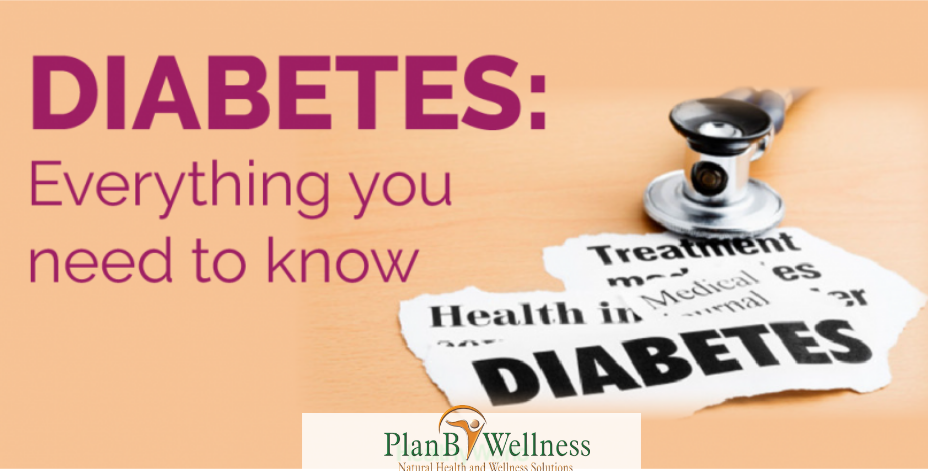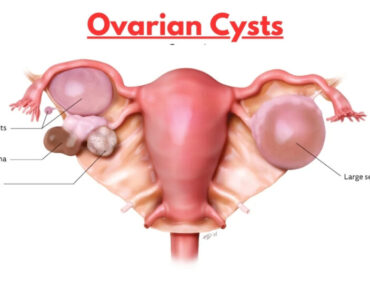Diabetes is a number of diseases that involve problems with the hormone insulin. Medically referred to as diabetes mellitus, diabetes describes a group of metabolic diseases in which the person has high blood glucose (blood sugar), either because insulin production is inadequate, or because the body’s cells do not respond properly to insulin, or both.
Normally, the pancreas (an organ behind the stomach) releases insulin to help your body store and use the sugar and fat from the food and every this you consume. Diabetes can then occur when the pancreas produces very little or no insulin, or when the body does not respond appropriately to the insulin produced by the pancreas.
Patients with high blood sugar will typically experience frequent urination (polyuria), they will become increasingly thirsty (polydipsia) and hungry (polyphagia).
If left untreated, diabetes can cause many complications.
Acute complications can include diabetic ketoacidosis, hyperosmolar hyperglycemic state, or death.
Serious long-term complications include cardiovascular disease, stroke, chronic kidney disease, foot ulcers and damage to the eyes.
NB: You can contact us for a guaranteed natural solution for stroke and kidney diseases.
The most common diabetes symptoms include frequent urination, intense thirst and hunger, weight gain, unusual weight loss, fatigue, cuts and bruises that do not heal, male sexual dysfunction, numbness and tingling in hands and feet.
TYPE 1 DIABETES

Some people do refer to this type as insulin-dependent diabetes, juvenile diabetes, or early-onset diabetes.
Type 1 diabetes happens when your immune system destroys cells in your pancreas called beta cells which are the ones that produce insulin. hence, the body does not produce insulin.
DamageS to beta cells from type 1 diabetes throws the process off. Glucose doesn’t move into your cells because insulin isn’t there to do it.
Instead it builds up in your blood and your cells starve. This causes high blood sugar.
Medically, patients with type 1 diabetes will need to take insulin injections for the rest of their life. They must also ensure proper blood-glucose levels by carrying out regular blood tests and following a special diet.
However, natural remedies that work on preparing the damages to the beta cell and the pancreas have been proven to be helpful to type 1 diabetic patients.
You can click here to read about such natural remedy.
Sensitivity and responsiveness to insulin are usually normal, especially in the early stages of type 1 diabetes.
Type 1 diabetes can also be accompanied by irregular and unpredictable high blood sugar levels, frequently with ketosis and sometimes with serious low blood sugar levels.
Other complications include an impaired counter-regulatory response to low blood sugar, infection, gastroparesis (which leads to erratic absorption of dietary carbohydrates), and endocrinopathies.
Symptoms of type1 diabetes are often subtle, but they can become severe. They include:
- Heavy thirst
- Increased hunger (especially after eating)
- Dry mouth
- Nausea and vomiting
- Pain in your belly
- Frequent urination
- Unexplained weight loss (even though you’re eating and feel hungry)
- Fatigue (weak, tired feeling)
- Blurred vision
- Heavy, laboured breathing (your doctor will call this Kussmaul respiration)
- Frequent infections of the skin, urinary tract, or vagina
Signs of an emergency with type 1 diabetes include:
- Shaking and confusion
- Rapid breathing
- Fruity smell to your breath
- Pain in your belly
- Loss of consciousness (rare)
The key to good health is to keep your blood sugar levels within the range your doctor gives you.
You’ll need to check them often and adjust insulin, food, and activities to make that happen.
TYPE 2 DIABETES

Type 2 diabetes is the most common type of diabetes mellitus.
It begins with insulin resistance; a condition in which cells fail to respond to insulin properly. As the disease progresses, a lack of insulin may also develop.
The most common cause is excessive body weight and insufficient exercise. The defective responsiveness of body tissues to insulin is believed to involve the insulin receptor.
In the early stage of type 2 diabetes, the predominant abnormality is reduced insulin sensitivity. At this stage, high blood sugar can be reversed by a variety of measures and medications that improve insulin sensitivity or reduce the liver’s glucose production.
Type 2 diabetes is primarily due to lifestyle factors and genetics. A number of lifestyle factors are known to be important to its development, including obesity (defined by a body mass index of greater than 30), lack of physical activity, poor diet, stress, and urbanization.
Dietary factors also influence the risk of developing type 2 diabetes. Consumption of sugar-sweetened drinks in excess is associated with an increased risk. The type of fats in the diet is also important, with saturated fat and trans fats increasing the risk and polyunsaturated and monounsaturated fat decreasing the risk.
Eating lots of white rice, and other starches, also may increase the risk of diabetes. A lack of physical activity is believed to cause 7% of cases.
GESTATIONAL DIABETES

Gestational diabetes is the third main form and occurs when pregnant women without a previous history of diabetes develop high blood sugar levels.
Gestational diabetes mellitus resembles type 2 diabetes in several respects involving a combination of relatively inadequate insulin secretion and responsiveness.
It occurs in about 2 -10% of all pregnancies and may improve or disappear after delivery.
However, after pregnancy approximately 5 – 10% of women with gestational diabetes are found to have diabetes, most commonly type 2.
Gestational diabetes is fully treatable, but requires careful medical supervision throughout the pregnancy because of the baby.
Management may include dietary changes, blood glucose monitoring, and in some cases, insulin may be required.
There are also natural remedies that have been proven to be high effective for gestational diabetes and you can find one here.
Though it may be transient, untreated gestational diabetes can damage the health of the foetus or mother.
Risks to the baby include macrosomia (high birth weight), congenital heart and central nervous system abnormalities, and skeletal muscle malformations.
Increased levels of insulin in a foetus’s blood may inhibit foetal surfactant production and cause infant respiratory distress syndrome. A high blood bilirubin level may result from red blood cell destruction.
In severe cases, perinatal death may occur, most commonly as a result of poor placental perfusion due to vascular impairment.
Other Types of Diabetes

Prediabetes indicates a condition that occurs when a person’s blood glucose levels are higher than normal but not high enough for a diagnosis of type 2 diabetes. Many people who later develop type 2 diabetes spend many years in a state of prediabetes.
Latent autoimmune diabetes of adults (LADA) is a condition in which type 1 diabetes develops in adults. Adults with LADA are frequently initially misdiagnosed as having type 2 diabetes, based on age rather than cause.
Any disease that causes extensive damage to the pancreas may lead to diabetes (for example, chronic pancreatitis and cystic fibrosis).
Diseases associated with excessive secretion of insulin-antagonistic hormones can cause diabetes (which is typically resolved once the hormone excess is removed).
Many drugs impair insulin secretion and some toxins damage pancreatic beta cells. The ICD-10 (1992) diagnostic entity, malnutrition-related diabetes mellitus (MRDM or MMDM, ICD-10 code E12), was deprecated by the World Health Organization (WHO) when the current taxonomy was introduced in 1999.
Other forms of diabetes mellitus include congenital diabetes, which is due to genetic defects of insulin secretion, cystic fibrosis-related diabetes, steroid diabetes induced by high doses of glucocorticoids, and several forms of monogenic diabetes.
Prevention and treatment involve maintaining a healthy diet, regular physical exercise, a normal body weight, and avoiding use of tobacco.
Control of blood pressure and maintaining proper foot care are important for people with the disease.
Diabetic Emergencies
Low blood sugar (hypoglycemia), is common in people with type 1 and type 2 diabetes. Most cases are mild and are not considered medical emergencies. Effects can range from feelings of unease, sweating, trembling, and increased appetite in mild cases to more serious effects such as confusion, changes in behaviour such as aggressiveness, seizures, unconsciousness, and (rarely) permanent brain damage or death in severe cases.
Moderately low blood sugar may easily be mistaken for drunkenness; rapid breathing and sweating, cold, pale skin are characteristic of low blood sugar but not definitive.
Mild to moderate cases are self-treated by eating or drinking something high in sugar. Severe cases can lead to unconsciousness and must be treated with intravenous glucose or injections with glucagon.
People (usually with type 1 diabetes) may also experience episodes of diabetic ketoacidosis (DKA), a metabolic disturbance characterised by nausea, vomiting and abdominal pain, the smell of acetone on the breath, deep breathing known as Kussmaul breathing, and in severe cases a decreased level of consciousness.
A rare but equally severe possibility is hyperosmolar hyperglycemic state (HHS), which is more common in type 2 diabetes and is mainly the result of dehydration
The major long-term complications relate to damage to blood vessels. Diabetes doubles the risk of cardiovascular disease and about 75% of deaths in diabetics are due to coronary artery disease.

Other macrovascular diseases include stroke, and peripheral artery disease.
The primary complications of diabetes due to damage in small blood vessels include damage to the eyes, kidneys, and nerves.
Damage to the eyes, known as diabetic retinopathy, is caused by damage to the blood vessels in the retina of the eye, and can result in gradual vision loss and eventual blindness.
Diabetes also increases the risk of having glaucoma, cataracts, and other eye problems. It is recommended that diabetics visit an eye doctor once a year.
Damage to the kidneys, known as diabetic nephropathy, can lead to tissue scarring, urine protein loss, and eventually chronic kidney disease, sometimes requiring dialysis or kidney transplantation.
NB: You can contact us for potent natural remedies for kidney issues.
Damage to the nerves of the body, known as diabetic neuropathy, is the most common complication of diabetes. The symptoms can include numbness, tingling, pain, and altered pain sensation, which can lead to damage to the skin.
Diabetes-related foot problems (such as diabetic foot ulcers) may occur, and can be difficult to treat, occasionally requiring amputation (contact us for a guaranteed natural remedy for treating wounds relating to diabetes, no matter how long it’s been there).
Additionally, proximal diabetic neuropathy causes painful muscle atrophy and weakness.
There is a link between cognitive deficit and diabetes. Compared to those without diabetes, those with the disease have a 1.2 to 1.5-fold greater rate of decline in cognitive function.
Being diabetic, especially when on insulin, increases the risk of falls in older people.
How to determine whether you have diabetes, prediabetes or neither
Doctors can determine whether a patient has a normal metabolism, prediabetes or diabetes in one of three different ways – there are three possible tests:
The A1C test
- at least 6.5% means diabetes
- between 5.7% and 5.99% means prediabetes
- less than 5.7% means normal
The FPG (fasting plasma glucose) test (also called fasting blood sugar)
- at least 126 mg/dl means diabetes
- between 100 mg/dl and 125.99 mg/dl means prediabetes
- less than 100 mg/dl means normal
An abnormal reading following the FPG means the patient has impaired fasting glucose (IFG)
The OGTT (oral glucose tolerance test)
- at least 200 mg/dl means diabetes
- between 140 and 199.9 mg/dl means prediabetes
- less than 140 mg/dl means normal
An abnormal reading following the OGTT means the patient has impaired glucose tolerance (IGT)
The above is the detail of everything important that you need to know about diabetes.
If you have been diagnosed of diabetes and need a guaranteed natural remedy that can help you to reverse it, click here for one that we have used to help many people.
Stay healthy and never give up
Plan B Wellness
Twitter: @planbwellness
Instagram: @planbwellness
WhatsApp: +2348099666650










[…] high blood pressure in pregnancy, gestational diabetes, iron-deficiency anaemia, severe nausea and […]
[…] for women in their 20s to carry a child because there’s a lower risk of high blood pressure, gestational diabetes and other health issues that can complicate […]